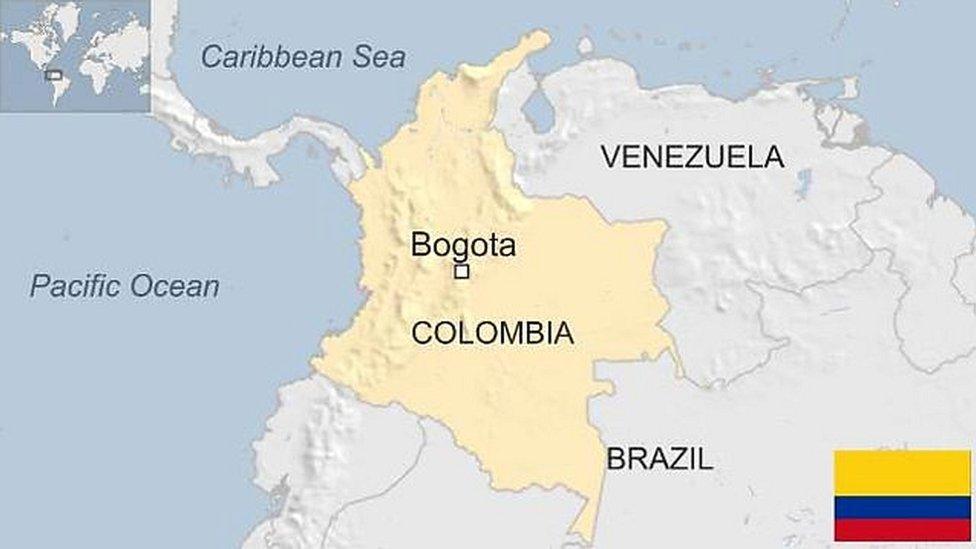Colombia's Farc rebels - 50 years of conflict
- Published

The Revolutionary Armed Forces of Colombia (Farc) was formed in 1964
A peace deal aimed at ending Colombia's armed conflict is in limbo after voters narrowly rejected the agreement signed between the government and left-wing Farc rebels.
Many voters felt that the deal, reached after years of negotiations, was too lenient for rebels who may have committed war crimes. However the two sides have said they are pressing on with the peace effort.
About 260,000 people were killed and millions displaced in the 52-year conflict.
The Revolutionary Armed Forces of Colombia (Farc) were formed in 1964 with the stated intention of overthrowing the government and installing a Marxist regime.
After modest beginnings, the group rose to prominence through the 1980s and 1990s as its association with the drugs trade improved its financial standing. At its peak it was the largest and best-equipped guerrilla force in Latin America.
KEY DATES
2000 - 2016
2 October: Voters reject the peace deal by a razor-thin margin - 50.2% against to 49.8% in favour - on a low turnout of 27%.
26 September 2016: President Santos and Farc leader Timochenko sign the agreement at a ceremony in Cartagena.
24 August 2016: The government and the rebels announce they have reached a final peace agreement.
23 June 2016: The Farc and the government sign a ceasefire, prompting scenes of jubilation across Colombia with the imminent end of the conflict.
15 December 2015: After three years of peace talks, the two sides sign a key deal on paying reparations and ensuring justice for victims of the conflict.
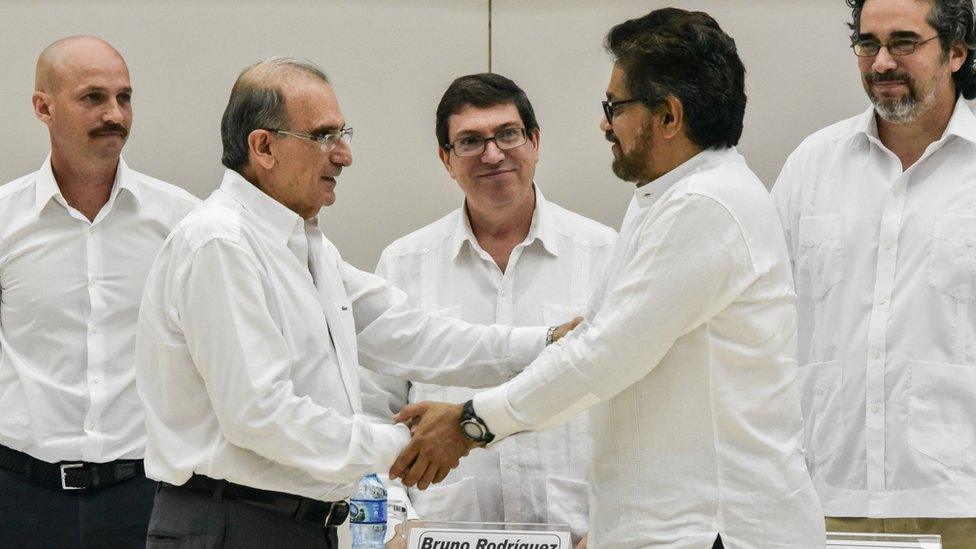
The head of the Colombian government delegation Humberto de la Calle (L) and the head of the FARC-EP delegation Ivan Marquez (R) shake hands after the signing the historic deal
16 May 2014: Farc agree to "end any relationship" with the drugs trade, upon which it relies for most of its funding.
26 May 2013: The two sides issue a joint statement announcing an agreement on land reform. Land reform is the first of six key issues laid out on the peace agenda.
November 2012: Formal peace talks between the Colombian government and Farc commence in Havana, Cuba. Farc declares a unilateral two-month ceasefire.
28 August 2012: President Juan Manuel Santos says talks have begun over a new peace process.
15 November 2011: The group announces that Timoleon Jimenez, alias Timochenko, is the new leader of the group.

Timoleon Jimenez - also known as Timochenko
4 November 2011: Farc leader Alfonso Cano killed by the military.
25 May 2008: The group confirms the death of Farc founder Manuel Marulanda from heart attack.
31 December 2006: Former Development Minister Fernando Araujo escapes during a military operation. He had been held hostage for six years.
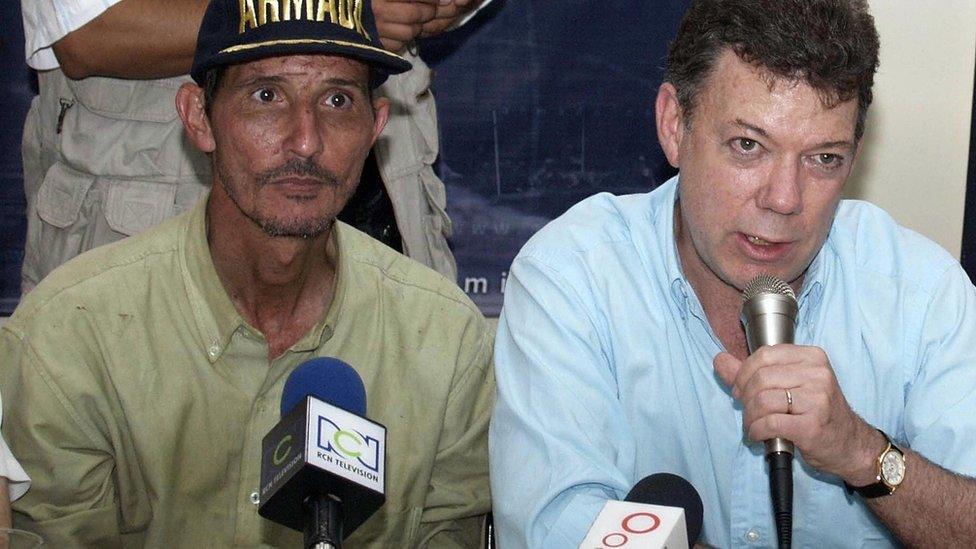
Former Development Minister Fernando Araujo talks to the press following his rescue from Farc
December 2005: Government forces seize the traditional Farc stronghold of Tolima.
February - October 2005: Surge of attacks on political and military targets, including an assault on a marine base in Narino which kills 16 people.
7 February 2003: Attack on the exclusive El Nogal Club in Bogota leaves 36 people dead. The leaders of the Farc are tried in absentia for the bombing in July the following year.
22 February 2002: Senator Ingrid Betancourt kidnapped and held for six years before being rescued by the Colombian military along with 14 other hostages.
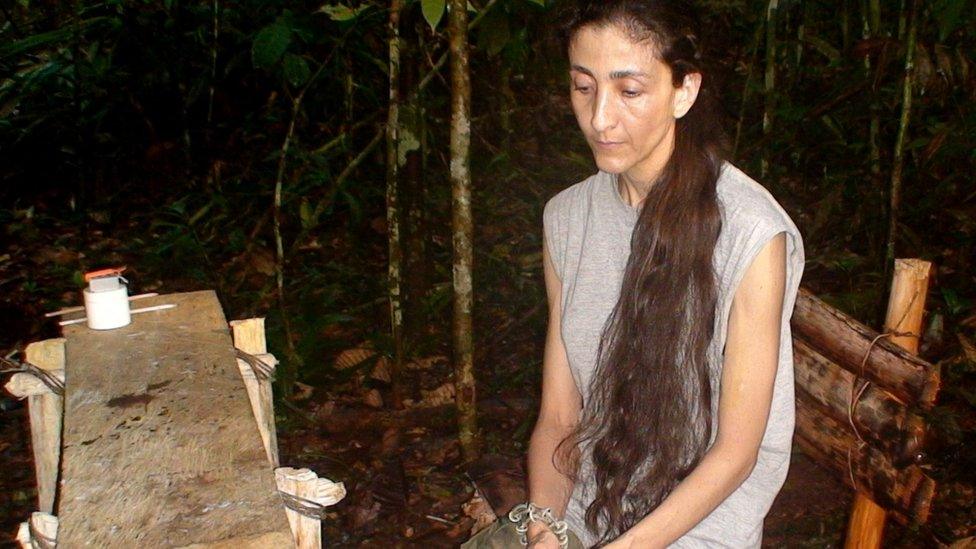
Ingrid Betancourt spent six years in captivity
20 February 2002: Farc rebels hijack a domestic flight carrying 24 passengers, prompting President Andres Pastrana to end peace talks which began in 1999.
November 2001: US State Department lists Farc among groups whose assets are subject to seizure as part of the "war on terrorism".
1964 - 1999
May 1999: President Pastrana and leader Manuel "Sureshot" Marulanda announce the start of a period of "negotiation and dialogue" following a meeting between the two in July the previous year. Large areas of the country are demilitarised to facilitate the talks.
August 1996: Farc take 60 Colombian soldiers hostage; the first mass abduction carried out by the group.
May 1991: Second attempt at peace process begins. Talks collapse a year later.
1987: Ceasefire agreed in 1984 ends following the assassination of a presidential candidate associated with Farc.
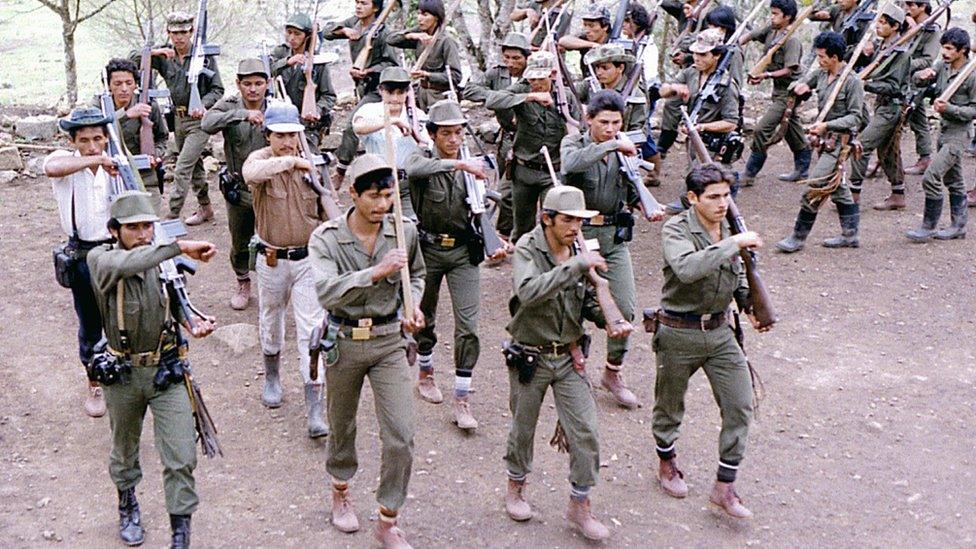
At its peak Farc was the largest and best equipped guerrilla force in Latin America
1986: Rebels demand $100m from the Shell Oil Company to operate in the Magaleas valley. The firm refuses to pay and suspends operations in the area.
1985: Farc guerrilla fighters attack several firms based in Medellin, including IBM, Union Carbide and Xerox.
1984: Ceasefire agreed following talks with the government.
1977: Farc rebels kidnap a US Peace Corps volunteer who is held for three years and released following payment of a $250,000 ransom.
1966: Farc are adopted by the Communist Party of Colombia as its armed wing.
1964: Formed by Manuel Marulanda after fleeing a government assault on communist groups in the country.
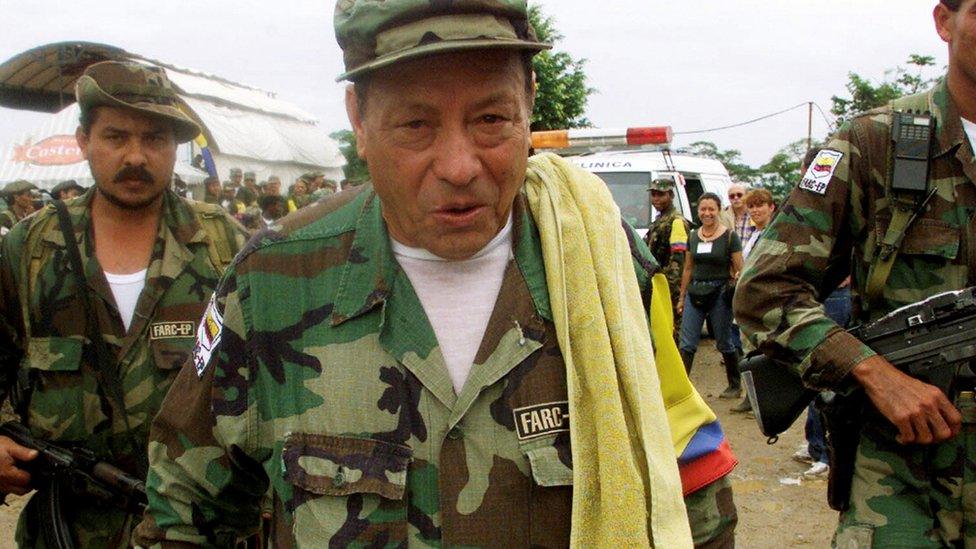
Farc founder Manuel Marulanda Velez
BBC Monitoring, external reports and analyses news from TV, radio, web and print media around the world. You can follow BBC Monitoring on Twitter , externaland Facebook, external.
- Published14 February 2023
